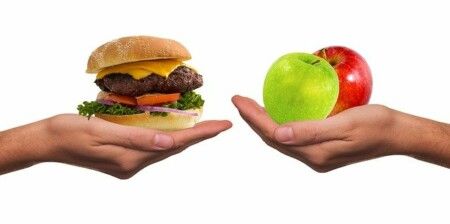Histamine intolerance – When food makes you sick
More and more people are affected by food intolerances of all kinds, z.B. from histamine intolerance. However, one cause of discomfort after eating certain foods can be an excess of histamine, which the body is unable to break down properly for certain reasons. The best-known form of food intolerance is lactose intolerance.
How to recognize histamine intolerance
The symptoms of a histamine intolerance can be quite varied and different. For example, after eating foods that contain histamine, you may experience a flush, which is characterized by a reddening of the skin, especially on the face and décolleté, along with a strong feeling of warmth.
Fatigue after eating, stomach and abdominal pain, diarrhea, nausea, dizziness, headaches, difficulty concentrating and rapid heartbeat, as well as general hyperactivity, which can also be accompanied by insomnia, are among the possible reactions of the body.
Foods that are particularly high in histamine include alcohol, fish, cheese, tomatoes, and chocolate, but eating large amounts of certain fruits, nuts, and nuts can also cause a lot of histamine to accumulate in the body. Glutamate, a seasoning, has long been suspected of causing histamine reactions.
Thus it can be z. B. You may experience these symptoms after eating in a Chinese restaurant, where glutamate is often used to season food, or after eating convenience foods that contain glutamate.
This is how histamine intolerance can be detected
Your doctor can easily determine whether you actually suffer from histamine intolerance by testing your blood, stool, and urine with the help of appropriate allergy tests. This will also determine how severe your histamine intolerance is. You may be only mildly intolerant, so that you only react to foods with a high histamine content, or histamine may cause you problems even in the smallest amounts.
Additional testing for other food intolerances may provide further clarity in your diagnosis, and keeping a food diary for a period of time may also be useful.
How to treat a histamine intolerance
The first and easiest way to treat histamine intolerance is to avoid foods that contain histamine. You can find a lot of information about this as well as food tables from which you can see which foods contain how much histamine, so that you can avoid the biggest histamine bombs.
Your doctor can also help you here, and you will often be offered nutritional counseling as part of the diagnosis, which will tell you exactly what you can still eat.
If you just can’t do without pizza, tuna, dark chocolate or the occasional glass of red wine, you can take a medicine that binds the histamine in your body. These capsules are then taken before meals to prevent reactions from occurring when you eat foods containing histamine. However, in some cases such remedies do not help, help only to a limited extent, or are poorly tolerated or not tolerated at all.
In this case, the only option is a low-histamine diet, which can be just as tasty and healthy on top of that! In addition, it is possible that after a longer period of abstinence and, if necessary, a change in diet recommended by your doctor, you will gradually be able to eat foods containing histamine again.


